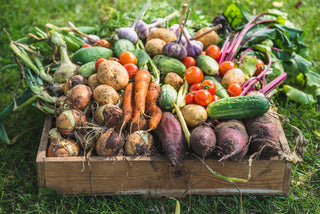When it comes to adding heat and flavor to your dishes, Cayenne Pepper and Thai Chili are two of the most popular choices. While both are known for their spiciness, they have distinct characteristics that set them apart. Below is a detailed comparison to help you understand their differences and choose the right one for your culinary needs.
Key Characteristics
| Characteristic | Cayenne Pepper | Thai Chili |
|---|---|---|
| Appearance | Long, slender, typically red or green | Short, slim, usually red or green |
| Heat Level | Moderately hot | Extremely hot |
| Scoville Heat Units (SHU) | 30,000 to 50,000 SHU | 50,000 to 100,000+ SHU |
| Flavor Profile | Earthy, slightly sweet | Intensely spicy with fruity undertones |
| Usage | Commonly used as a spice or seasoning | Essential in Thai cuisine |
| Culinary Applications | Soups, stews, sauces, marinades | Stir-fries, curries, salads, dips |
| Drying Method | Often dried and ground into powder | Typically used fresh |
| Geographical Origin | Native to Central and South America | Native to Southeast Asia |
| Plant Characteristics | Perennial shrub | Small, bushy plant |
| Growing Conditions | Thrives in warm climates | Prefers tropical environments |
| Health Benefits | Contains capsaicin, which may aid digestion and boost metabolism | Rich in vitamins and antioxidants |
| Popular Varieties | Cayenne Long Slim, Cayenne Purple | Thai Bird's Eye, Thai Dragon |
Detailed Comparison
1. Appearance
-
Cayenne Pepper: Long and slender, typically 10-25 cm in length. They are usually red when mature but can also be green.
-
Thai Chili: Short and slim, usually 2-5 cm in length. They are often red or green, depending on their maturity.
2. Heat Level
-
Cayenne Pepper: Moderately hot, with a Scoville Heat Unit (SHU) range of 30,000 to 50,000. This makes it hotter than a jalapeño but milder than a habanero.
-
Thai Chili: Extremely hot, with a SHU range of 50,000 to 100,000+. This makes it significantly hotter than cayenne pepper, comparable to some of the spiciest peppers in the world.
3. Flavor Profile
-
Cayenne Pepper: Has an earthy, slightly sweet flavor with a moderate level of heat. It’s often used to add a subtle kick to dishes without overwhelming the palate.
-
Thai Chili: Known for its intense spiciness with fruity undertones. The heat is immediate and lingers, making it a favorite in dishes that require a bold, spicy flavor.
4. Culinary Applications
-
Cayenne Pepper:
-
Often used as a dried and ground spice to season soups, stews, sauces, and marinades.
-
Popular in Cajun and Creole cuisines, as well as in hot sauces and spice blends.
-
-
Thai Chili:
-
Essential in Thai cuisine, where it’s used fresh to add heat to stir-fries, curries, salads, and dips.
-
Also used in Vietnamese, Indonesian, and Malaysian dishes for its intense heat and fruity flavor.
-
5. Drying Method
-
Cayenne Pepper: Typically dried and ground into powder, making it a versatile spice that can be easily stored and used in various dishes.
-
Thai Chili: Usually used fresh in cooking, as drying can alter its flavor and heat profile. However, it can also be dried and used in spice pastes.
6. Geographical Origin
-
Cayenne Pepper: Native to Central and South America, particularly in regions like Mexico and Peru. It has since been cultivated worldwide.
-
Thai Chili: Native to Southeast Asia, particularly Thailand, where it is a staple in local cuisine.
7. Plant Characteristics
-
Cayenne Pepper: Grows as a perennial shrub that can reach up to 1 meter in height. It produces long, slender peppers that hang from the plant.
-
Thai Chili: A small, bushy plant that typically grows to about 30-60 cm in height. It produces clusters of small, fiery peppers.
8. Growing Conditions
-
Cayenne Pepper: Thrives in warm climates with plenty of sunlight. It requires well-drained soil and regular watering.
-
Thai Chili: Prefers tropical environments with high humidity and consistent warmth. It grows best in rich, well-drained soil.
9. Health Benefits
-
Cayenne Pepper:
-
Contains capsaicin, which has been shown to aid in digestion, boost metabolism, and reduce inflammation.
-
Rich in vitamins A, C, and E, as well as antioxidants.
-
-
Thai Chili:
-
Also contains capsaicin, which provides similar health benefits, including pain relief and improved circulation.
-
High in vitamins A and C, as well as antioxidants that support immune health.
-
10. Popular Varieties
-
Cayenne Pepper:
-
Cayenne Long Slim: The most common variety, known for its long, slender shape and moderate heat.
-
Cayenne Purple: A unique variety with purple-colored peppers and a slightly milder flavor.
-
-
Thai Chili:
-
Thai Bird's Eye: One of the most popular varieties, known for its extreme heat and small size.
-
Thai Dragon: Slightly larger than the Bird's Eye, with a similar level of heat and fruity flavor.
-
Summary
| Aspect | Cayenne Pepper | Thai Chili |
|---|---|---|
| Heat Level | Moderate (30,000-50,000 SHU) | Extremely Hot (50,000-100,000+ SHU) |
| Flavor | Earthy, slightly sweet | Intensely spicy, fruity undertones |
| Culinary Use | Dried and ground, used in soups, stews | Fresh, essential in Thai cuisine |
| Origin | Central and South America | Southeast Asia |
| Health Benefits | Capsaicin, vitamins, antioxidants | Capsaicin, vitamins, antioxidants |
Conclusion
Both Cayenne Pepper and Thai Chili bring unique flavors and heat levels to the table, making them indispensable in their respective cuisines. Cayenne Pepper is ideal for those who prefer a moderate level of heat with an earthy flavor, while Thai Chili is perfect for those who crave intense spiciness with fruity undertones. Understanding these differences will help you choose the right pepper for your culinary creations, whether you're making a spicy curry or a flavorful marinade.
Which One Should You Choose?
-
Choose Cayenne Pepper if you want a moderate heat level and a versatile spice that can be used in a variety of dishes.
-
Choose Thai Chili if you’re looking for extreme heat and a bold, fruity flavor that’s essential in Thai and Southeast Asian cuisines.
References
-
Scoville Heat Scale: Scoville Scale Chart
-
Health Benefits of Capsaicin: Capsaicin Research
-
Culinary Uses of Peppers: Pepper Recipes






